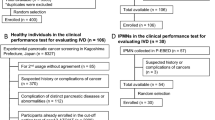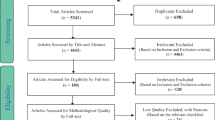Abstract
Hemoglobin-heme is variably converted to porphyrin during enterocolic transit. This intestinal converted fraction, as measured by HemoQuant, was elevated as a predictor of the occult bleeding site in 152 patients with discrete lesions. The intestinal converted fraction, expressed as the percentage of total fecal hemoglobin, was similar with upper gastrointestinal and proximal colon lesions. Within the colon, values trended downward with more distal location: means ± standard deviations were 18±14 proximal colon, 16 ±15 sigmoid, and 10±10 rectum. The amount of fecal blood also affected the intestinal converted fraction; correcting for hemoglobin concentration improved separation by site. Corrected intestinal converted fraction values were significantly lower with rectal (P< 0.0005) and sigmoid (P<0.02) lesions than with proximal colon lesions. Unfortunately, large within-site variation caused considerable overlap between sites. We conclude that the intestinal converted fraction is influenced by the site and amount of bleeding. However, its clinical utility is compromised by substantial individual differences in luminal hemoglobin metabolism.
Similar content being viewed by others
References
Burton RM, Landreth KS, Barrows GH, Jarett DD, Songster CS: Appearance, properties, and origin of altered human hemoglobin in feces. Lab Investigation 35:111–115, 1976
Snapper I, Dalmeier JJ: Die bedevtung des abbaues von blutfarbstoff in darm zu porphyrin fur den nachweis des okkulten blutes in denfazes. Dtsch Med Wochenschr 47:985–986, 1921
Kammerer H: Bakterien und Blutfarbstoff: Buinflussung des blutfarbstoff durch bakteren. Arch Pharmakol Exp Pathol 88:247–285, 1920
Schwartz S, Dahl J, Ellefson M, Ahlquist D: The HemoQuant test: A specific and quantitative determination of heme (hemoglobin) in feces and other materials. Clin Chem 29:2061–2067, 1985
Ahlquist DA, McGill DB, Schwartz S, Taylor SF, Ellefson M, Owen RA: HemoQuant, a new quantitative assay for fecal hemoglobin, comparison with hemoccult. Ann Intern Med 101:297–302, 1984
Schwartz S, Ellefson M: Fecal recovery of hemoproteins from blood, meat, and fish ingested by normal volunteers: The HemoQuant assay. Gastroenterology 89:19–26, 1985
Ahlquist DA, McGill DB, Schwartz S, Taylor SF, Ellefson M, Owen RA: Fecal blood levels in health and disease: A study using HemoQuant. N Engl J Med: 312:1422–1428, 1985
Cifuentes PF, Engel RR, Ellefson M, Lee K, Madery G, Schwartz S: Quantitative determination of fecal blood by HemoQuant test in the newborn infant. Pediatr Res 18:185A, 1983 (abstract)
Ellefson RD, Larson MS, Schwartz S, Ellefson ME: The HemoQuant test remodelled for the busy clinical laboratory. Clin Chem 32:1142–1143, 1986
Finegold SM, Davis A, Miller LG: Comparative effect of broad-spectrum antibiotics on non-spore forming anaerobes and normal bowel flora. Ann NY Acad Sci 145:268–275, 1967
Herzog P, Holtermuller KH, Preiss J, et al: Fecal blood loss in patients with colonic polyps: A comparison of measurements with51chromium-labeled erythrocytes and with the Haemoccult test. Gastroenterology 83:957–962, 1982
Krersky B, Malmud LS, D'Ercole F, Maurer AH, Fisher RS: Colonic transit scintigraphy: A physiologic approach to the quantitative measurement of colonic transit in humans. Gastroenterology 91:1102–1112, 1986
Author information
Authors and Affiliations
Additional information
Supported by the Mayo Foundation.
Rights and permissions
About this article
Cite this article
Goldschmiedt, M., Ahlquist, D.A., Wieand, H.S. et al. Measurement of degraded fecal hemoglobin-heme to estimate gastrointestinal site of occult bleeding appraisal of its clinical utility. Digest Dis Sci 33, 605–608 (1988). https://doi.org/10.1007/BF01798364
Received:
Revised:
Accepted:
Issue Date:
DOI: https://doi.org/10.1007/BF01798364




